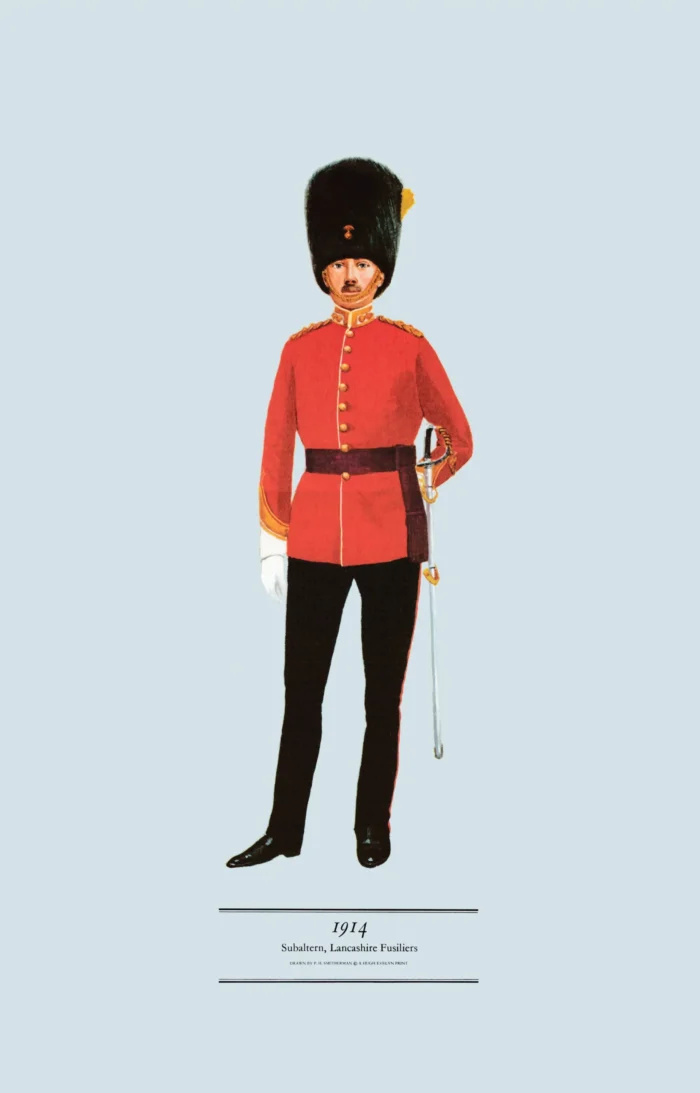Subaltern, Lancashire Fusiliers, 1914
£20.00
Raised 1688, from 1881 Lancashire Fusiliers; from1968 Royal Regiment of Fusiliers – FUSILIERS (scroll down for a more detailed Description)
Published 1970 by © Hugh Evelyn Limited; drawn by Colonel Philip Henry Smitherman (1910-1982), Royal Corps of Signals
Size: c. 24.5 x 37.5 cm [9 ½ ″ x 14 ½ ″] (may vary slightly from printers’ cut 50 years ago)
Printed on on medium cardstock weighing 144 g/sm2 faced in light greyish blue (RGB c. d4e1e8)
Print is STANDARD size – shipping is the same for 1 to 10 prints (based on largest print size in your order) – see Shipping & Returns.
In stock
Description

Since 1968 The Royal Regiment of Fusiliers. The 20th Foot were raised in 1688. They were entitled The Lancashire Fusiliers in 1881. They were awarded a laurel wreath, which they carry on their colours, for their gallant behaviour at Minden when they lost 300 men but declined to obey an order to rest on the following day. In 1968 the regiment was amalgamated with the other regiments of the Fusilier Brigade – the Royal Northumberland Fusiliers, Royal Warwickshire Fusiliers and the Royal Fusiliers (City of London Regiment) – to form the current Royal Regiment of Fusiliers.
Here an officer of a fusilier regiment in the full dress of 1914, the year when full dress went out of general use. In the infantry it had been used less since 1900. The bearskin, or racoon-skin, cap shown here was common to all fusilier regiments, and was similar in all respects to the bearskin caps of the foot guards, but half an inch shorter. An officer of any non-fusilier regiment would have worn the same uniform, but with the helmet in place of the cap. The sash has found its final resting place round the waist, and the sword belt is now a webbing belt worn under the sash, with the gold-embroidered sword slings hung from it. The differences of the lace on the cuff have also been abolished, and all officers now wear the cuff ornamented as shown here.
Additional information
| Dimensions | 24 × 37.5 cm |
|---|





